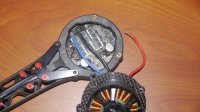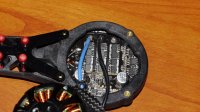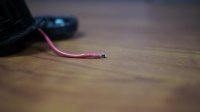Did you solder something on the motors/ESC's ?
This solderpoints are thin like paper, and if you don't watch out and soldering is too hot, they come off the circuit board together with the motor wire and the solder.
Chris
Chris, yes we did to the ESC. We had to replace a few arms resulting from the FOD experience -- yes we have been through it all -- we have a while back. Now that you mentioned it, I guess I might have to go back and make sure all the points are well soldered.
deluge2 said:
As regard the OP, I agree it seems likely that the loose cable probably was the cause (or at least the primary cause), rather than the result, of the crash. junanata, can you provide any more detail (or a pic) of the 'loose cable'? That might help distinguish fatigue-related breakage (away from solder joints) from solder point failure for various possible reasons. Were the connections 'factory stock' or were there post factory changes made?
Steve
Steve, I will post it when I get back to the office Monday; everything is at the office. The connections were post factory changes.



